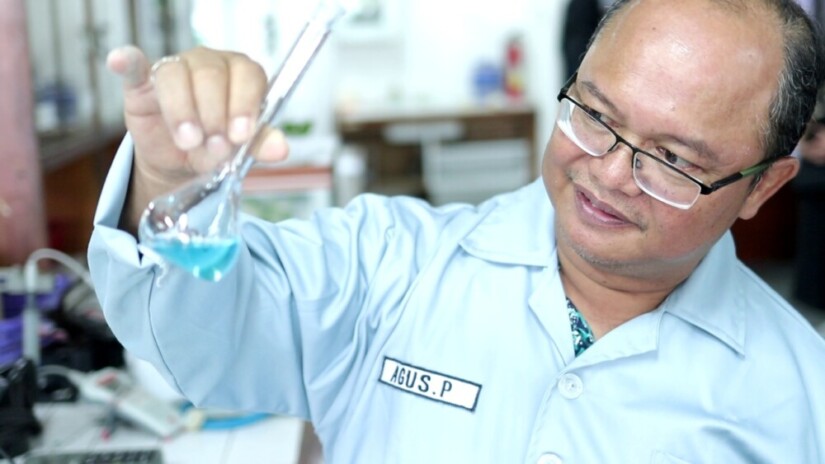
Indonesia has become one of the countries with the highest levels of mercury pollution in the world. This contamination contains a myriad of effects that are harmful to public health and the environment as well.
Overcoming this problem, lecturers and researchers of the Department of Chemical Engineering, UGM Faculty of Engineering, Ir. Agus Prasetya, M.Eng.Sc., Ph.D., developed research related to the method of removing mercury from the water using local materials.
“This research begins with our concern in the research group about the problem of mercury contamination due to small-scale and illegal gold mines which in its practice almost uses all variants of mercuries. Mercury contaminants are spread in the mine waste, into the water, then it is possible to spread everywhere,” he explained when interviewed on Thursday (20/2) at UGM.
Waste containing mercury can cause health problems in the community because when mercury contamination starts to enter the soil, it will be taken by plants, then it becomes possible to enter the animal’s body, and eventually, it enters the human body and accumulates causing serious health problems.
Mercury contamination, he explained, can cause various degenerative diseases in children around the mining site. He mentioned several cases that had emerged, such as bone fragility, imbecile or mental retardation, and babies born without a skull.
“So, the problem is not only with miners and people who are mining but to subsequent generations, to their children and grandchildren,” he said.
He uses combining adsorption with phytoremediation theory or taking up mercury by plants as the remediation of mercury from water contaminated by mercury.
Adsorption is carried out using zeolites, which also known as natural adsorbents, those have a good capacity to get mercury and are also available in abundance in Indonesia. After scheduling with zeolite, the next process is carried out by taking the metal mercury by plants.
“In this study, we newly test the jasmine water. Well, it is okay if you want to try other plants,” Agus said.
From research conducted on a laboratory scale, this method has proven to be able to eliminate 90 percent of mercury reserves in polluted air.
This journal has been published as one of the reputable scientific journals, the Journal of Environmental Chemical Engineering entitled “Characteristics of Hg Elimination Using Zeolite Adsorption and Echinodorus Palaefolius Phytoremediation in Underground Flow Built-in Wetlands (SSF-CW) Models”.
“What we tried was water containing 20 ppm mercury, and after we tried using a device that combined adsorption and phytoremediation, it changed into 2 ppm. And after the mercury has been taken by zeolites and plants, the mercury cannot be separated from zeolites, it shows that it has been stabilized,” he explained.
He hopes this research can be further developed by testing on a field scale through collaboration with experts from several other fields of science. This field testing proves that it is entirely appropriate to be applied in locations that have been contaminated with mercury.
“This technology is not very complicated, to put in other words, it can be applied by the community if they are taught to apply,” he concluded.
Author: Gloria
Translator: Natasa A


